Island Life on Ambrym
Where are we?
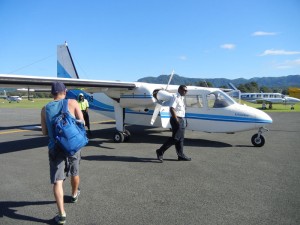 Our arrival on Ambrym is the most culture shocked we’ve experienced so far in traveling. We are the only people on our plane, and have arrived at a grass-runway airport where 20 or so locals are hanging out waiting to board our plane and take it back to the urban luxury of Port Vila. We chose this island because of their unique volcano and with the hopes to visit some villages that still live in self-sustaining communities, but upon landing, I’m wondering if I will have some regrets about our decision.
Our arrival on Ambrym is the most culture shocked we’ve experienced so far in traveling. We are the only people on our plane, and have arrived at a grass-runway airport where 20 or so locals are hanging out waiting to board our plane and take it back to the urban luxury of Port Vila. We chose this island because of their unique volcano and with the hopes to visit some villages that still live in self-sustaining communities, but upon landing, I’m wondering if I will have some regrets about our decision.
None of the villages in Ambrym have Internet access or email, so we have resorted to landing at the airport and asking around about village guest houses. After seeing the airport, I’ve determined this will be tougher than I thought. There is one employee at the airport named Sam. He unloads our luggage, loads the luggage of the six people getting on the plane, the gets ready to walk back home through the jungle. I stop him and inquire about villages to stay. He points us to a pick-up truck and says its heading to Port Vatu, a small village an hour south of the airport. He offers to call one of the leaders in the village to arrange our stay. Since this appears to be our only option, I say yes.
Transportation on the island
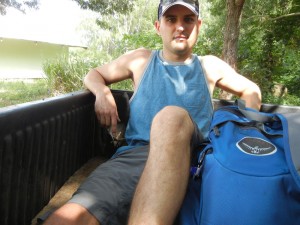 We climb into the back of the pick-up and we make room for six others to join us. We begin a long, bumpy ride on a mud road, if I can even call this a road. There are a few parts where the left tire track is a good two feet below the right tire track. Everyone who is standing leans to right to avoid us toppling over. This doesn’t seem to phase anyone except us, and I immediately change my position in the truck with my feet underneath me so that I can jump out quicker if we start to tip. We find out this truck also serves as the mailman, and we make a stop in one village to drop off a box, and pick up a bag of rice in another.
We climb into the back of the pick-up and we make room for six others to join us. We begin a long, bumpy ride on a mud road, if I can even call this a road. There are a few parts where the left tire track is a good two feet below the right tire track. Everyone who is standing leans to right to avoid us toppling over. This doesn’t seem to phase anyone except us, and I immediately change my position in the truck with my feet underneath me so that I can jump out quicker if we start to tip. We find out this truck also serves as the mailman, and we make a stop in one village to drop off a box, and pick up a bag of rice in another.
Accommodations
After an hour-long roller coaster ride, we arrive in Port Vatu (not to be confused with Port Vila, the city we stayed in the rest of our time in Vanuatu). We are greeted by John, the village’s tourism guru and volcano guide. He shows us to the guest house where we can drop our bags. We were not prepared for just how remote this village is. Our guesthouse is one of two buildings made out of cement, the other being the church. Everyone else lives in huts made from local trees, with walls of woven coconut palms, and roofs made from woven branches and leaves. There are chickens, dogs, and flies everywhere, and the smell of the village is something two Americans don’t adjust to quickly. And although it seems rough, we find it hard to complain when the 200 people that live here endure it every day and seem perfectly content and happy. This is a Protestant village, and there is a large grave in the middle of the village that contain the remains of the missionary who brought Christianity here.
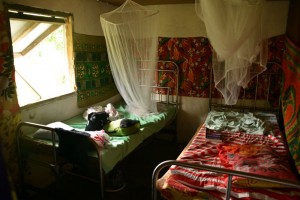 The bedroom in our guest house consists of two hospital beds(which I presume are left over from WWII) as well as mosquito nets and mattresses that are less than an inch thick. Our living space has a picnic table, a few chairs, and a gas stove connected to a propane tank(a luxury here!). Our shared bathroom is a few huts away, and features a western style toilet, over a hole, inside a little shed. At first we are turned off by the accommodations, but realize quickly that we actually have the nicest house in the village. This adds a little uncomfortableness, except every time we turn around, someone new is there to say hello and ask if they can help. We are blown away by the welcome we have received here and it helps us forget about not having running water, Internet access, or any other luxuries of urban life.
The bedroom in our guest house consists of two hospital beds(which I presume are left over from WWII) as well as mosquito nets and mattresses that are less than an inch thick. Our living space has a picnic table, a few chairs, and a gas stove connected to a propane tank(a luxury here!). Our shared bathroom is a few huts away, and features a western style toilet, over a hole, inside a little shed. At first we are turned off by the accommodations, but realize quickly that we actually have the nicest house in the village. This adds a little uncomfortableness, except every time we turn around, someone new is there to say hello and ask if they can help. We are blown away by the welcome we have received here and it helps us forget about not having running water, Internet access, or any other luxuries of urban life.
Drinking the rain and eating like locals
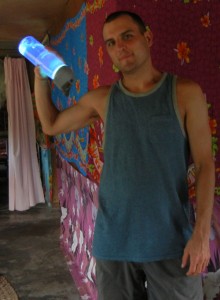 Rainwater is the only available fresh water on Ambrym. There are no lakes or rivers, and digging wells isn’t possible because of the lava below the surface. The villages efficiency with water is amazing to see. Every roof is built to funnel the rainwater into a tank. A few of the tanks are cleaner and use cloth filters, and are used for drinking and cooking. All other tanks are used for washing clothes, dishes, and people, as well as any other water needs. Every drop is conserved and reused if possible. Our daily shower consists of either dumping a bucket of water over our heads, or jumping in the ocean. For drinking, we are given a bucket of water from the cleaner tanks. We take the extra precaution of also cleaning our water with our Camelbak All Clear bottle. It tastes surprisingly refreshing for rainwater.
Rainwater is the only available fresh water on Ambrym. There are no lakes or rivers, and digging wells isn’t possible because of the lava below the surface. The villages efficiency with water is amazing to see. Every roof is built to funnel the rainwater into a tank. A few of the tanks are cleaner and use cloth filters, and are used for drinking and cooking. All other tanks are used for washing clothes, dishes, and people, as well as any other water needs. Every drop is conserved and reused if possible. Our daily shower consists of either dumping a bucket of water over our heads, or jumping in the ocean. For drinking, we are given a bucket of water from the cleaner tanks. We take the extra precaution of also cleaning our water with our Camelbak All Clear bottle. It tastes surprisingly refreshing for rainwater.
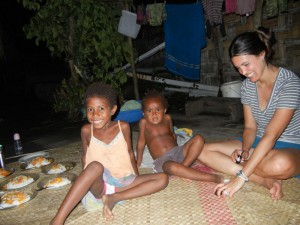 All of our meals are cooked by John’s wife, Sessie, and he even invites us to eat with his family. We sit on the ground outside his house, under a shelter, and trade stories about our lives. Meals always consist of locally grown vegetables, cooked with small noodles and sauces, served over either breadfruit or rice. A few meals, Saisy even throws in a can of tuna that they purchased for us at the village store. It takes a few bites to forget we’re eating off a plate that was cleaned by rain, but it tastes good and has been good to our western stomachs.
All of our meals are cooked by John’s wife, Sessie, and he even invites us to eat with his family. We sit on the ground outside his house, under a shelter, and trade stories about our lives. Meals always consist of locally grown vegetables, cooked with small noodles and sauces, served over either breadfruit or rice. A few meals, Saisy even throws in a can of tuna that they purchased for us at the village store. It takes a few bites to forget we’re eating off a plate that was cleaned by rain, but it tastes good and has been good to our western stomachs.
Drinking Kava
Every evening, all the men gather at the back of the village at the Kava “bar” (hut) to drink and relax after a long day. We are invited to go, and we agree, but we are nervous about how it will taste and how it will effect us. I stand in awe as I watch them grind up the root, poor the ground contents into a rag, and use rain water to brew a brownish juice into a pail waiting below. Each man takes turns scooping out a shot, and many have three to four bowls each. Alissa and I decide to give it a try and drink one bowl each. The taste is very bitter, but it’s more drinkable than I expected. My mouth immediately goes numb, which they warned us would happen. Kava seems to be a mix between the effects of alcohol and marijuana. It makes you tired, but gives you a nice relaxed sensation. After we drank, we sat around and chatted with the guys about island life. Many of the younger men take seasonal work in Australia and New Zealand, and bring the money back to improve the village and to build more houses.
Sleeping the first night was a challenge. We each awoke four or five times due to dogs howling and barking or roosters crowing. Whoever came up with the myth that a rooster crows in the morning was full of it. They crow all night long. We awoke together at about 3am to what sounded like someone rustling through our bags. Alissa pointed the flashlight, and we watched a large mouse scurry back into the wall. The mouse continued to run around inside the walls throughout the night. Not the most peaceful sound to listen to when trying to sleep. After a long night, we awoke at about 6am to begin preparing for our 11-hour trek to Ambrym’s volcano. We’re not thrilled about trekking 18 miles on four hours sleep, but we’re going to go anyways.

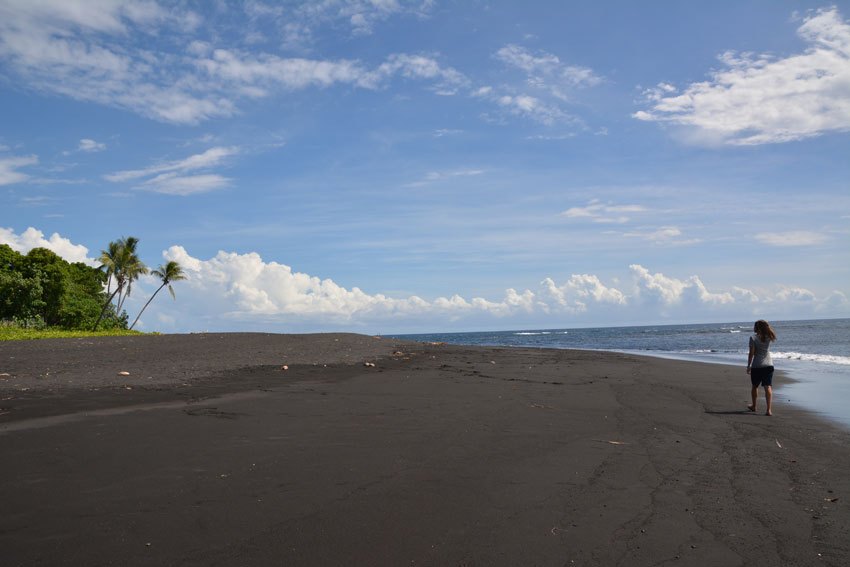
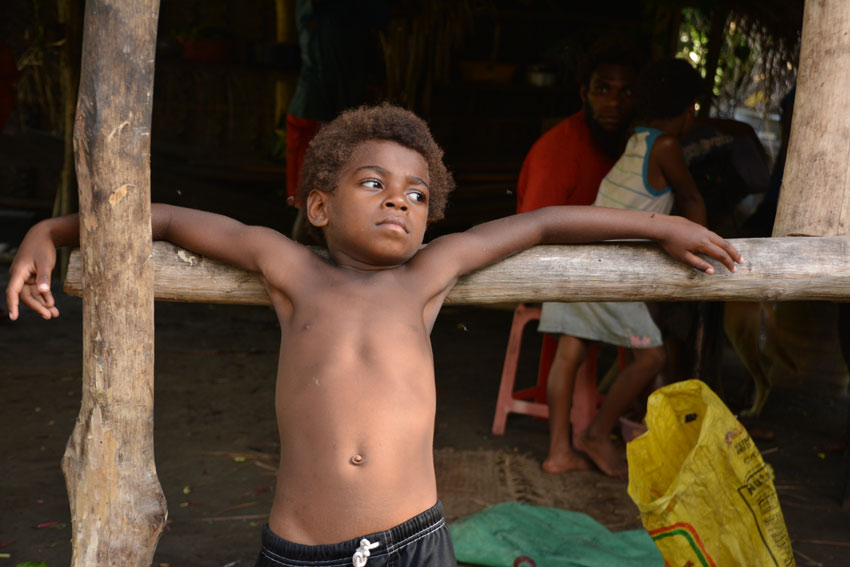
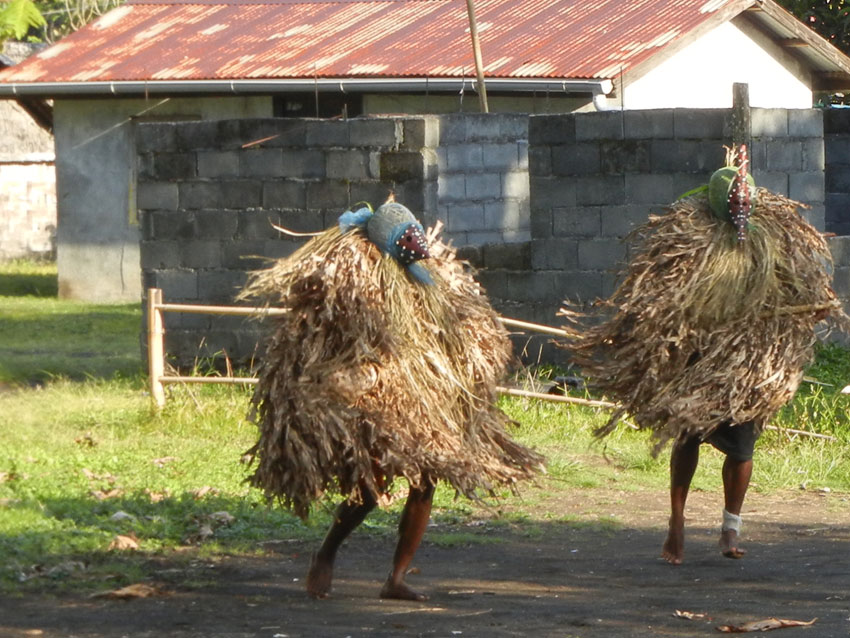
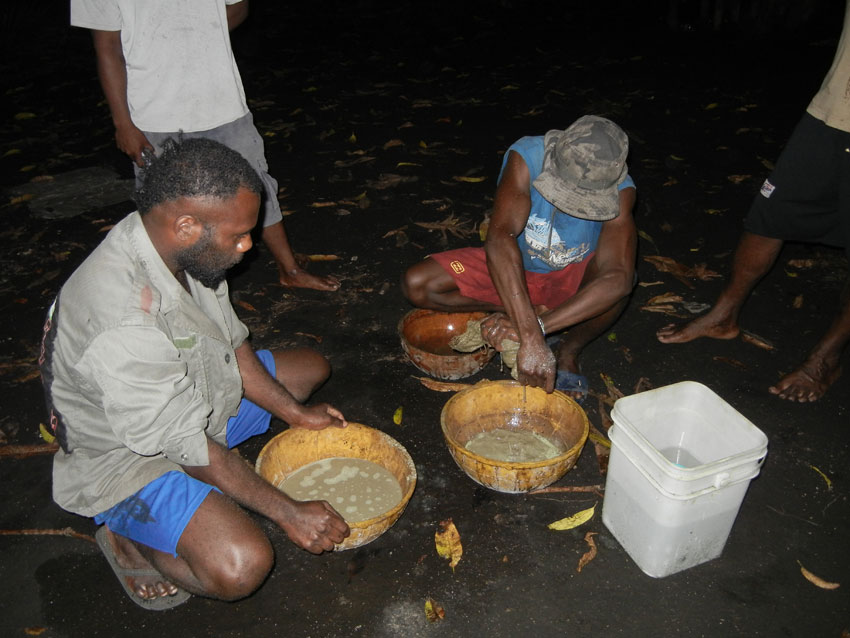


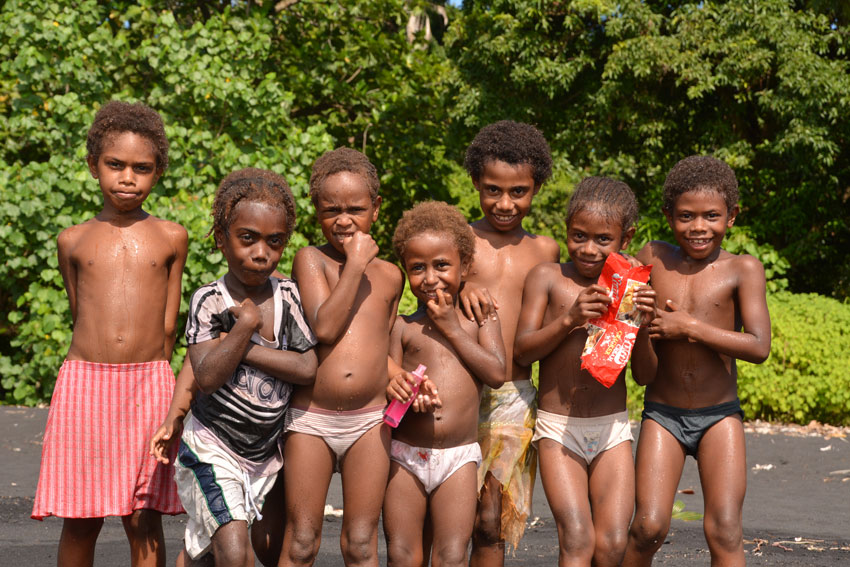
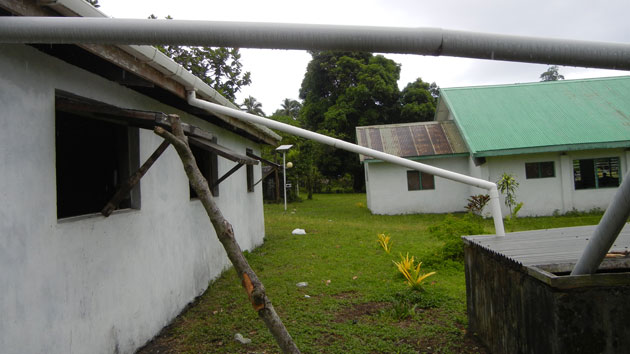
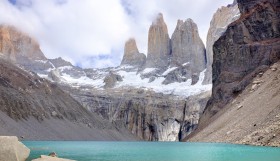
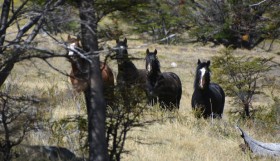
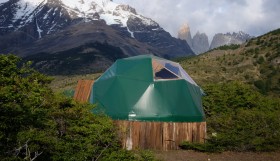
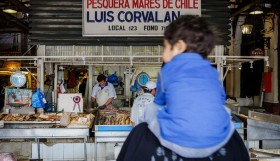












Pingback: This World Rocks | Video: Village Life on Ambrym Island
Pingback: This World Rocks | Your Solomon Islands Cheat Sheet
Pingback: This World Rocks | Whoa: We've Been on the Road Six Months | This World Rocks |
Pingback: World Travellers: Dan and Alissa from This World Rocks